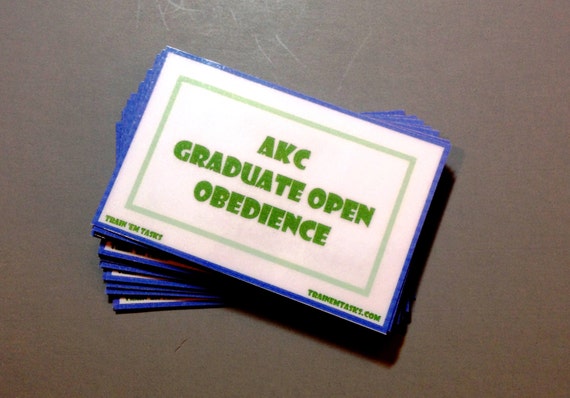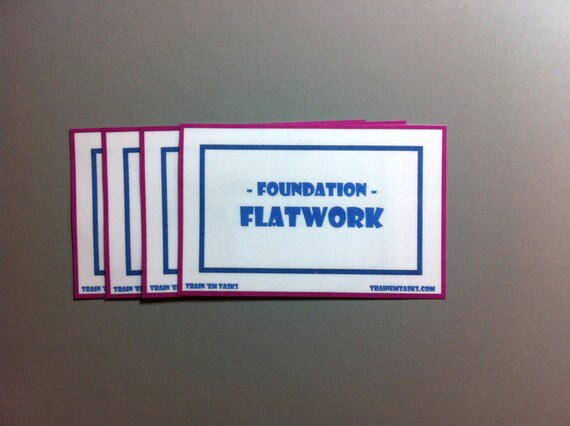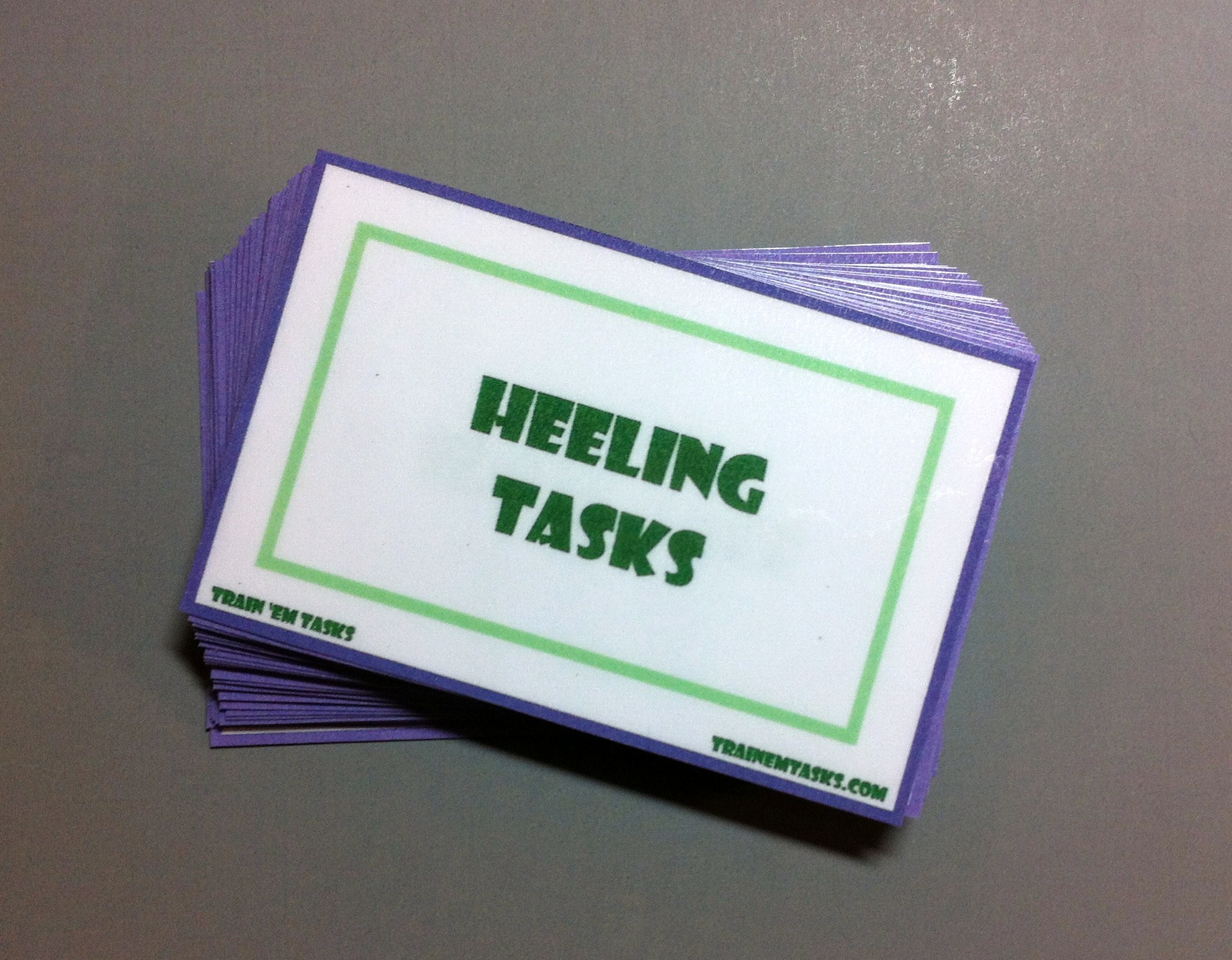The AKC has a set of classes which are on the "Graduate" level of their obedience classes. They offer both Graduate Novice for those dogs who have earned their CD (Companion Dog) title but aren't quite ready for the Open obedience ring. They also have a Graduate Open class for dogs with their CDX (Companion Dog Excellent) but have more work to do before they enter the Utility obedience ring. These transitional obedience classes offer similar exercises to Open (for Graduate Novice) and Utility (for Graduate Open) but, those exercises are a little bit easier for the handler/dog team. Train 'Em Tasks does have a task pack for Graduate Novice already available to customers and I'll make a blog post about that at some point. Today, I'm going to focus on Graduate Open. ;) Both of the Graduate Novice and Graduate Open Task Packs are found in our Competitive Obedience Product section of our Etsy shop!
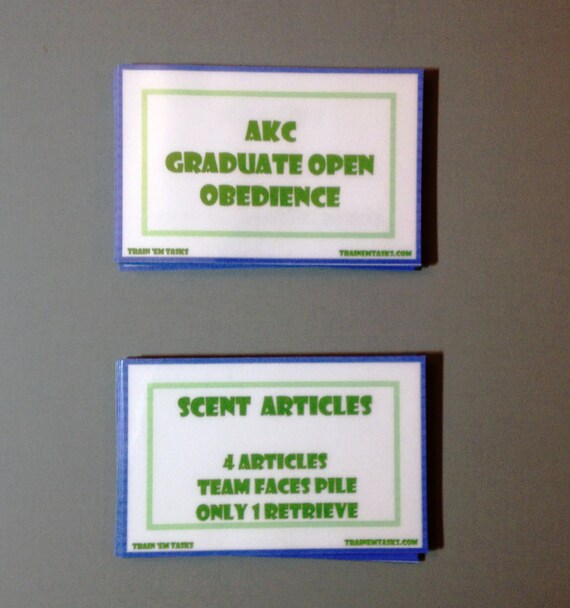 Graduate Open is a great stepping stone for dog/handler teams who in between Utility and Open in their showing career. In the Graduate Open class, the exercises are the same basic exercises that are found in the Utility ring: Signal Exercise, Scent Discrimination, Directed Retrieve, Moving Stand/Exam, and Directed Jumping. Unlike the Utility ring, Go Outs are a separate exercise on their own where in Utility, they are part of the Directed Jumping exercise. The title abbreviation for Graduate Open is GO and to earn that, you must qualify 3 times under 2 different judges, just like the regular obedience classes.
Graduate Open is a great stepping stone for dog/handler teams who in between Utility and Open in their showing career. In the Graduate Open class, the exercises are the same basic exercises that are found in the Utility ring: Signal Exercise, Scent Discrimination, Directed Retrieve, Moving Stand/Exam, and Directed Jumping. Unlike the Utility ring, Go Outs are a separate exercise on their own where in Utility, they are part of the Directed Jumping exercise. The title abbreviation for Graduate Open is GO and to earn that, you must qualify 3 times under 2 different judges, just like the regular obedience classes. What makes the Signal Exercise different in Graduate Open versus Utility? A couple of things and you'll see that it's just a couple of small things with all of the exercises. To be able to pull off a qualifying score in Graduate Open, the dog and handler has to have a good grasp on the Utility exercises and be actively working towards the Utility ring. So, in the GO Signal Exercise, the heeling part is the same as UD Signal Exercises would be. But in GO, the handler may give the command and/or signal the dog to stand when told
by the judge. The handler will leave the dog and walk out about 10 - 20' and the judge will signal to down, sit, come, and finish.
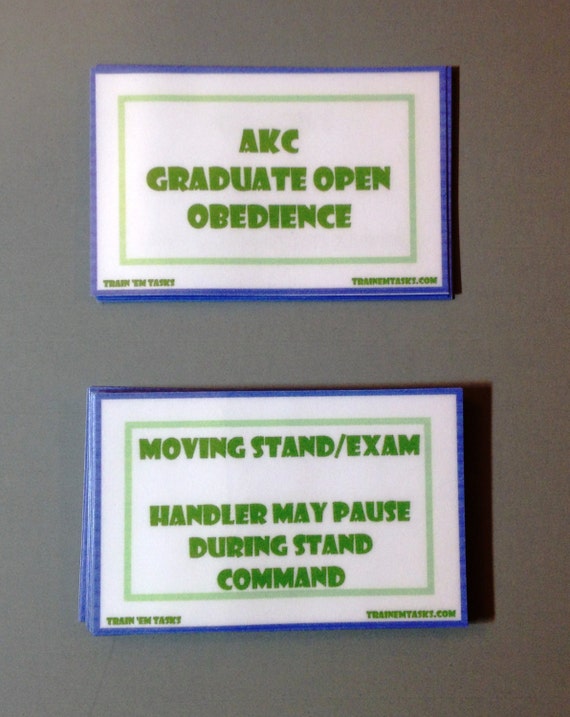 Scent Discrimination in Graduate Open is one article only and not two like the Utility ring. It is up to the handler if they will use a metal or leather article for the article the dog will bring back. The pile is made up of only 4 articles (2 metal and 2 leather) and the dog/handler team will stay facing the pile during the whole exercise. So, there are some significant changes to the Scent Discrimination exercise to make it more doable for a Graduate Open team.
Scent Discrimination in Graduate Open is one article only and not two like the Utility ring. It is up to the handler if they will use a metal or leather article for the article the dog will bring back. The pile is made up of only 4 articles (2 metal and 2 leather) and the dog/handler team will stay facing the pile during the whole exercise. So, there are some significant changes to the Scent Discrimination exercise to make it more doable for a Graduate Open team. Directed Retrieve Exercise or as a lot of people call it the glove exercise has pivots and the same distance between the dog/handler team and the gloves as the exercise would in the Utility ring. The GO difference for the Directed Retrieve exercise is there is no glove 2 in the center. So, the dog and handler only has to worry about gloves 1 and 3 which are located in opposite corners of the top of the ring.
The Graduate Open Moving Stand and Exam is another exercise that is pretty darn close to the Utility Moving Stand and Exam. The dog and handler heel forward as told by the judge and when told to "Stand your dog." the handler may pause or hesitate when giving their dog their stand/stay command. Then they
must move forward 12' out and stand to face the dog. The rest of the exercise is performed just as it would in the Utility ring.
The Go Out Exercises...like I mentioned before, this is rolled into the Utility ring's Directed Jumping exercise. As the stand alone exercise in Graduate Open, it starts with the handler and dog in the middle of the ring in between the two jumps (sort of like where they would stand to do the glove exercise) and facing the top of the ring. The judge says "Send your dog" and the handler commands the dog to move away from them and go out about 20' past the jumps and there the handler is standing. When the dog reaches that distance, the handler will tell the dog to sit just like in Utility. The dog needs to stop, turn, and sit facing the handler and points wouldn't be taken off for non-square sits. Unlike the Utility Go Outs, the handler will go and return to the dog in heel position like they would in a stay.
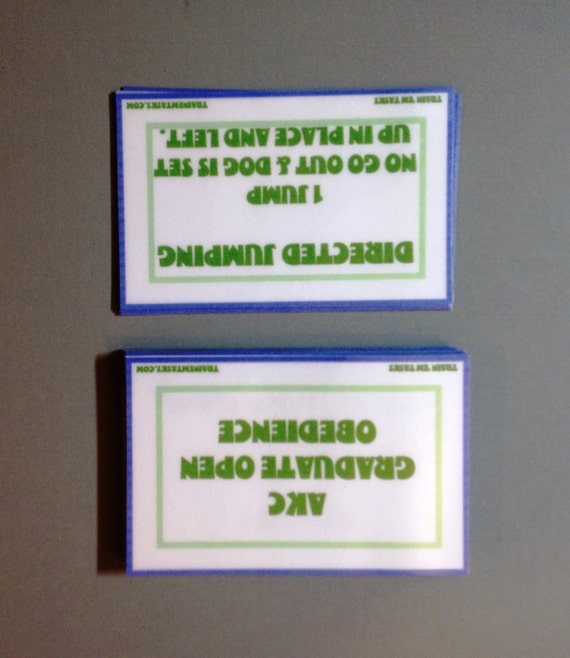
The last exercise in Graduate Open is the Directed Jumping Exercise. Since the Go Out is done separately from the Directed Jumping exercise in Graduate Open, the dog must be placed in position at the middle of the top of the ring by the handler. Just like in a recall, the handler will leave the dog and go to the middle in the opposite side of the ring and then face their dog. The judge will tell the handler which of the bar jump or high jump to send their dog over. Just like in Utility, the handler may turn towards the direct their dog is coming while the dog in the air over the jump. The dog has to front just like in a novice level recall and then finish. The GO directed jumping exercise is only one jump unlike Utility where the exercise is done only once.
If you and your dog are done with your CDX and are taking some time to prepare and train for the Utility ring but aren't quite there yet...Graduate Open is a good prep for the next step. I think that it could also be helpful for those handlers who have never set foot into a Utility ring before. Graduate Open might help those green Utility teams to work through some ring nerves for both the handler and the dog before hitting prime time in Utility A. So, if you're toying with the idea of getting your GO...GO FOR IT!! :D

